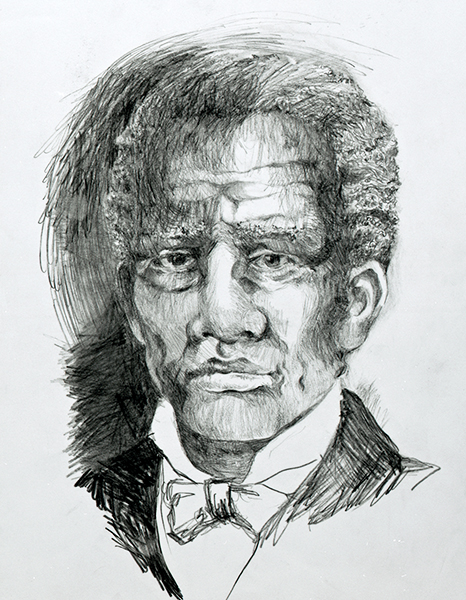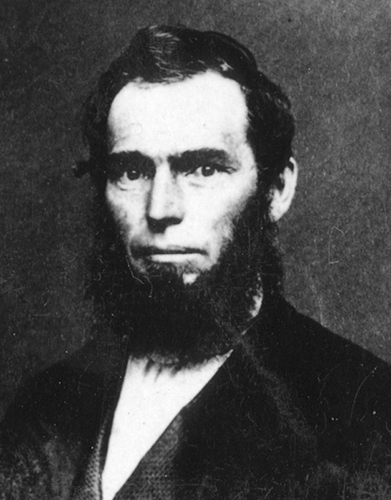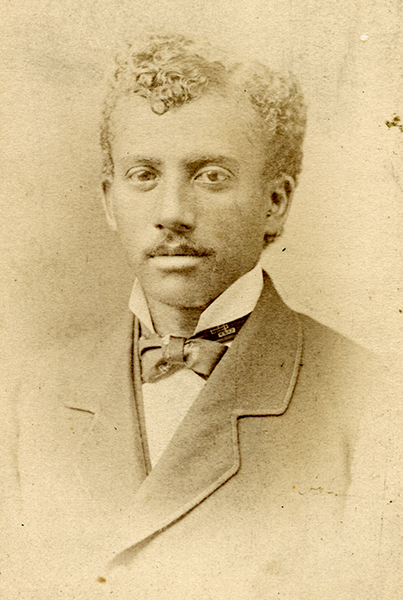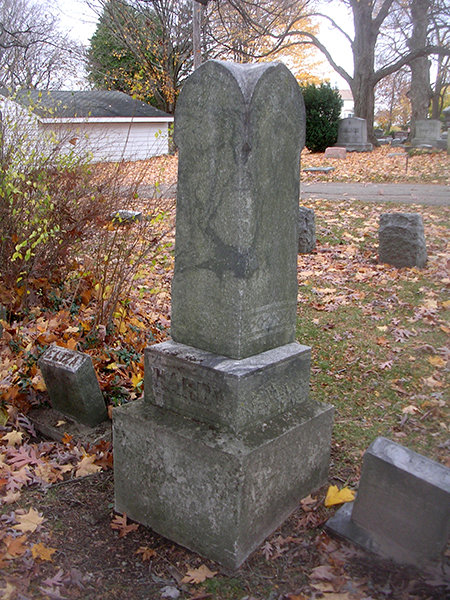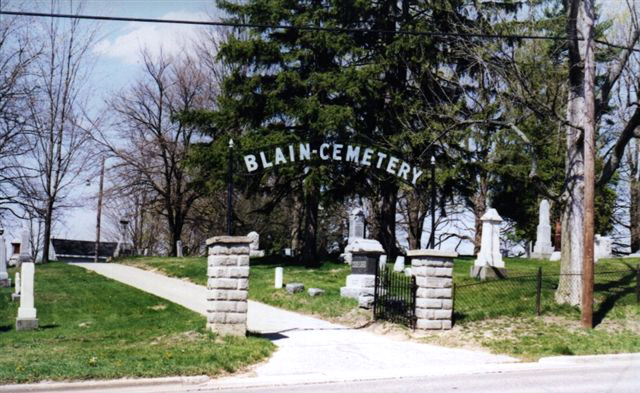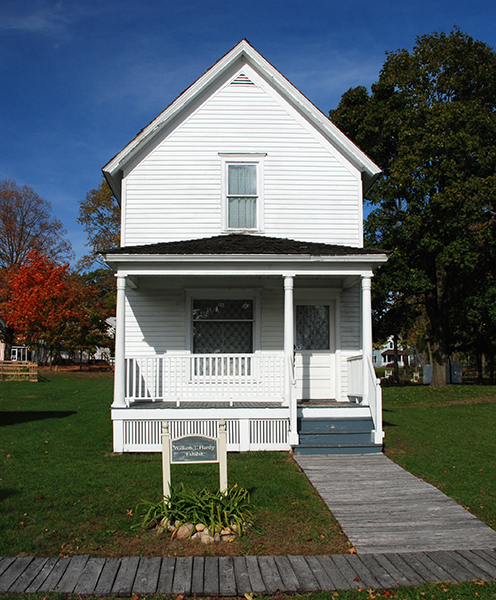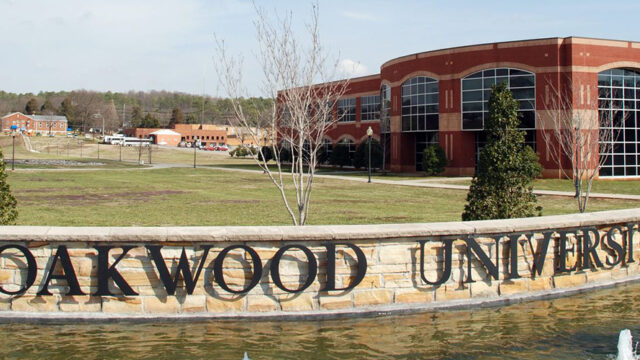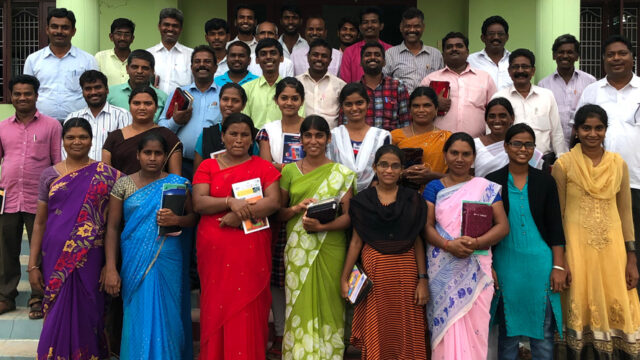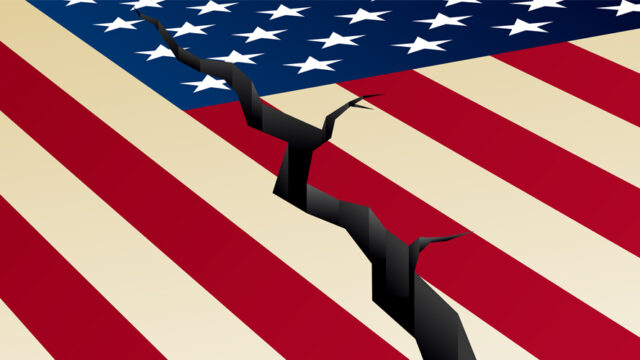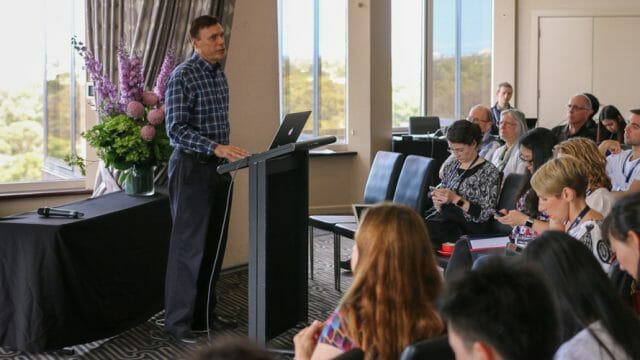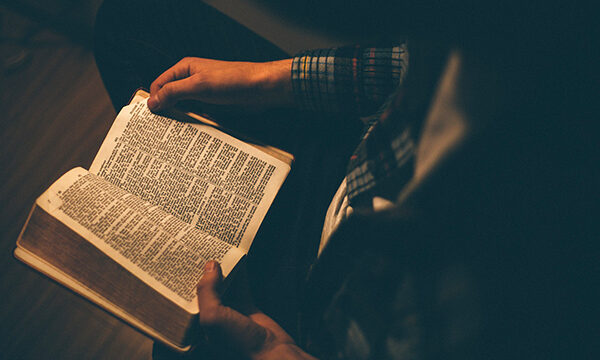Learn about a little known Adventist pioneer
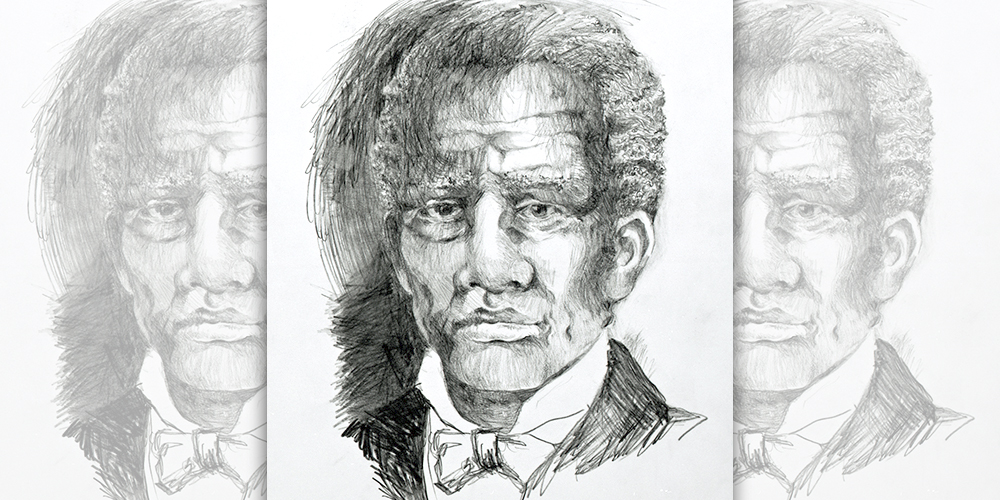
This article was published in the Adventist Review, February 24, 2011.To watch a video of this story, visit: https://www.artvnow.com/the-past-with-a-future-1/videos/the-past-with-a-future-william-j-hardy
Achieving a historic first is rarely easy. But achieving several such firsts is nothing short of newsworthy. Such is the legacy of the William J. Hardy family of Michigan, Adventism’s first African American church members. In addition to the family’s being the first Black Seventh-day Adventists (despite their current anonymity), William Hardy is credited with being the first Black man elected to public office in Michigan; and Eugene, William’s son, was the first Black to graduate from high school in Michigan.
Westward to Michigan
William Hardy was born on January 9, 1823,1 in New York State.2 He moved with his parents to Michigan in 1827.3 His father died when William was about 7 years old. A few years later, when William was about 14, his mother contracted him to work for seven years for a farmer near Ann Arbor. Recognizing the young man’s exceptional abilities, the farmer released William before the seven-year contract ended. In 1844, William, then about 21 years of age, married Eliza Watts, who was also in her early 20s at the time.4
On April 23, 1846, William purchased two tracts of land totaling 95 acres in Gaines Township, Kent County, Michigan (near Grand Rapids).5 The following August, William and Eliza had their first child, a daughter they named Alice.6 Eventually, five more children—four boys (Eugene D., Asher, Lloyd, and William H.) and another girl (Mary Ellen)—were added to the Hardy family.7 For several years the family lived in a small log cabin on the part of the farmland that William had cleared. By 1850, the Hardy farm was valued at $600, slightly above the $580 average value for farms in Gaines Township at the time.8 Sometime prior to 1855, William sold his first farm and bought a second one consisting of 80 acres, not far from the first.
In June 1857, Joseph B. Frisbie, a former Methodist minister who accepted the message of the seventh-day Sabbath from Joseph Bates in 1853, held a series of meetings in Caledonia, about six miles from where the Hardy family lived. More than 30 people started keeping the Sabbath, with seven deciding to be baptized.9 Exactly when the Hardy family heard about Frisbie’s meetings is unclear, though in a letter William Hardy wrote to Uriah Smith published in the Review, April 29, 1858, he recalled, “Through the instrumentality of Bro. Frisbie, last summer, I was led to see a beauty in what is termed present truth, especially the commandments of God.”10
Follow-up meetings were held in Caledonia, October 3 and 4, 1857, conducted by Joseph Frisbie, John Byington, and James and Ellen White. On October 5, Joseph Frisbie baptized eight people. John Byington recorded in his diary that he stayed that night with the Hardy family. Byington noted that Eliza was in the truth, but that William was not yet decided. Byington described them as a very good and kind mulatto family.11 Perhaps Byington stayed with the Hardys because Eliza had been baptized that day, and he was hoping to convince William to join the church as well.
Whether then or shortly thereafter, William decided to join the Sabbathkeepers in Caledonia. In his letter to Uriah Smith he went on to say that “after being connected with the Free Will Baptists a number of years, I was led to cast my lot with the Sabbath-keepers in Caledonia; and I have never regretted that step. Last Sabbath we enjoyed the sweet, melting Spirit of the Lord. Our hearts were made glad; and we were enabled to ‘read our title clear to mansions in the skies.’ ”12
Music was such an important part of the spiritual experience of early Adventists that it was not unusual for them to incorporate words from hymns into their conversations or their letters to the editor of the church paper. His reference might also indicate that the Hardy family was musically inclined, something that other records seem to confirm.
Part of the Family
On Tuesday, January 25, 1859, Ellen White, John Loughborough, and Loughborough’s wife visited the Hardy family. The Loughboroughs and Ellen White were returning home to Battle Creek after an almost three-week trip. Traveling through fast-falling snow the 14 miles from Grand Rapids, the three exhausted and thoroughly chilled travelers arrived at the Hardy home in time for the noon meal. Later, Ellen White recorded in her diary: “Although the house is poor and old, everything is arranged in neatness and exact order. The children are well behaved, intelligent, and interesting. May I yet have a better acquaintance with this dear family.”13
The Hardys accompanied the Loughboroughs and Ellen White to the evening meeting, held some four miles from the Hardy home. John Loughborough spoke on the gift of the Spirit of God, and Ellen White followed with a talk about neatness and order.
Probably sometime later in 1859, the William Minisee family, who also are described in census records as being mulatto, joined the Caledonia church.14 Other members of the congregation were White.
In March 1860, William Hardy wrote to Review editor Uriah Smith, describing the experience of the group of Sabbathkeepers in Caledonia during the previous three years. “Although we have had some sore trials, we see now that they were for our good. Some think the narrow way is too narrow. . . . But, thank the Lord, there are a few who yet hold on to the commandments of God and the faith of Jesus.”15
About 1860, the Hardys’ log cabin burned down. For two months the family lived with their neighbors, the Baileys. Mr. Bailey was recalled as describing the winter the Hardys spent at his house as being “one of the most rewarding of my life.”16
Formal organization of the Caledonia church occurred during meetings conducted November 17 and 18, 1862, by J. N. Loughborough. The original membership was 34.17 The following January a Sabbath School was organized. At the same time, two of the Hardy children gave their hearts to the Lord.18 By mid-1863 the church had grown to 40 members.19Through the years, a number of prominent Seventh-day Adventist Church leaders spoke to the members in Caledonia, including J. N. Andrews, Joseph Bates, John Byington, D. M. Canright, M. E. Cornell, J. B. Frisbie, J. N. Loughborough, and James and Ellen White.20
Coping With the Challenges
Unfortunately, the spiritual situation in the Caledonia church was not always all that could be wished. Faultfinding, poor leadership, and a lack of genuine conversion were just some of the problems attributed to the church and its members.21 On December 20, 1866, the Whites again visited the Hardy family, this time stopping to enjoy breakfast with them. About their brief visit to the Hardy family James White wrote: “Here we felt to thank God for an Advent home, and simple, healthful fare.”22
In 1868, the Michigan Conference delegates voted to grant permission for the Caledonia church to change its name to the Gaines church.23 The name change reflected the fact that the congregation had moved its place of meeting from Caledonia to Gaines Township, where most members then lived. Through the years, William was given added leadership responsibilities in the Caledonia (later Gaines) church. By 1864, he was church clerk.24
In 1865, he reported to James White that during the previous fall and winter that the Caledonia church had paid $1,050 in commutation and bounty-fund money25 to pay for substitutes to serve in the Union Army during the Civil War. This was to prevent drafted Adventist young men from having to serve, given that Adventists had officially registered with the federal government as noncombatants.26
In 1868, William sent $20 on behalf of the Gaines church for the California Mission,27 possibly indicating that he was then serving as treasurer for the group. By 1876, William was unanimously elected elder of the church, a decision that pleased all.28 A few months later, it was reported in the Review that “Bro. Hardy now occupies the position of leader.”29Still later, in 1878, it was reported that “the burden of the work here [Gaines church] now rests almost wholly on Bro. W. J. Hardy. He has the confidence of the people.”30
Successful in Business and Society
Over the years the monetary value of William Hardy’s farm also increased. From $600 in the 1850 census, the value of his farm had increased to $2,000, and his personal property to $500 in the 1860 census. The 1860 Michigan Agricultural Census further indicated that he owned two workhorses, three milk cows, five other cattle, 26 sheep, and seven swine. During the previous year his farm had produced 100 bushels of wheat, 56 bushels of rye, 150 bushels of corn, 200 bushels of oats, and 76 pounds of wool.31
In 1867, William bought David Stafford’s farm.32 Stafford was another early Seventh-day Adventist who lived in Gaines Township.33 In the 1870 Federal Census, William’s real estate was valued at $7,000 and his personal property at $1,625.
From the number of Adventist books and periodicals purchased by the Hardys, it is obvious that William and his family were well-informed regarding the beliefs of his church. During his lifetime it was also stated that he “educated [his children] as gentlemen and ladies.”34
In 1870, the Fifteenth Amendment to the Constitution was passed, giving Black men the right to vote. Almost immediately, William became involved in local Republican politics. Despite living in a Democratic stronghold,35 in 1872 he was elected supervisor from Gaines Township, reportedly the first Black elected to office in the state of Michigan.36Later, he seems to have turned his energies toward serving his church, something he did well until suffering a stroke in the early 1880s.37
In the meantime, his oldest son, Eugene, graduated from high school in 1877 in Grand Rapids, Michigan,38 reportedly the first Black to do so in the state.39 Eugene studied law, but later became a music teacher.40 From 1879 to 1881, Eugene’s younger brother, William H. Hardy, attended Battle Creek College, where he took the teacher training course41 but did not graduate.
After suffering the stroke, William sold his farm and moved to a much smaller one near the community of Dutton, where later he operated a livery stable.42 Without William’s leadership, by 1885 the Gaines church disbanded.43Following William’s death on June 8, 1888, approximately 400 people attended his funeral44—indicating the respect of his White neighbors. A local newspaper eulogized him, saying: “He was a man of honor, honesty and integrity, and was appreciated by the community in which he lived.”45
William’s wife, Eliza, died on December 13, 1890.46 The Hardys are buried in Blain Cemetery in Gaines.47 Today, visitors who tour the Hardy Exhibit in Historic Adventist Village in Battle Creek are told about this stalwart pioneer Adventist family that not only contributed to their local church but also were significant in Michigan history.
_______________
1 Randal Maurice Jelks, African Americans in the Furniture City (Champaign, Ill.: University of Illinois Press, 2005), p. 3; Franklin Everett, “Biographical Sketches,” Memorials of the Grand River Valley (Chicago: Chicago Legal News Company, 1878), p. 29; Hardy’s obituary in The Advent Review and Sabbath Herald, (June 19, 1888, p. 398) gives his age at death as 65 years, 4 months, and 19 days. That works out to January 19, 1823. His death certificate lists his age merely as 65. A possible typographical error may explain the difference between that given in the Review and other sources that give Hardy’s birth date.
2 William Hardy consistently states in the 1850, 1860, 1870, and 1880 Federal Census records that he was born in New York State. However, his death certificate lists his place of birth as New Jersey.
3 According to Jelks (p. 3), Hardy’s parents were slaves. Since no source for that claim is given, and no corroborating documentation has to date been found, whether in fact they were slaves is not verified. However, it is maybe more than coincidental that the Hardy family moved from New York State to Michigan Territory in 1827, the year that New York State legally abolished slavery on July 4.
4 Ibid.
5 State Land Patents, Kent County, Michigan (Michigan Genealogical Society), pp. 2A, 2B.
6 Review and Herald, July 1, 1875, p. 7.
7 See Federal Census records for 1850, 1860, 1870, and 1880.
8 State Land Patents, pp. 2A, 2B.
9 Review and Herald, July 9, 1857, p. 80.
10 Ibid., Apr. 29, 1858, p. 191.
11 John Byington diary, Oct. 5, 1857 (Center for Adventist Research, Andrews University).
12 Seventh-day Adventist Hymn and Tune Book for Use in Divine Worship (Battle Creek, Mich.: Review and Herald, 1886), no. 1232. See also Review and Herald, Apr. 29, 1858, p. 191.
13 Arthur L. White: Ellen G. White, The Early Years, 1827-1862 (Hagerstown, Md.: Review and Herald, 1985), p. 398.
14 Review and Herald, June 14, 1877, p. 191.
15 Ibid., Mar. 29, 1860, p. 150.
16 “No Negro Pioneer Heirs” (Grand Rapids Press, May 22, 1966), p. 5.
17 Review and Herald, Dec. 23, 1862, p. 29.
18 Ibid., Feb. 3, 1863, p. 77.
19 Ibid., June 2, 1863, p. 6.
20 Ibid., Jan. 15, 1867, p. 66.
21 Ellen G. White, letter 3, 1862; Ellen G. White, manuscript 3, 1863; Ellen G. White, manuscript 10, 1868; Review and Herald, Jan. 31, 1865, p. 80; Mar. 21, 1865, p. 127; June 27, 1865, p. 30.
22 Review and Herald, Jan. 15, 1867, p. 66; A. L. White, pp. 158, 159.
23 Review and Herald, May 26, 1868, p. 357.
24 Ibid., May 31, 1864, p. 2.
25 Ibid., Mar. 21, 1865, p. 127.
26 Seventh-day Adventist Encyclopedia (Hagerstown, Md.: Review and Herald, 1996), vol. 11, p. 184.
27 Review and Herald, Nov. 17, 1868, p. 248.
28 Ibid., Feb. 17, 1876, p. 54.
29 Ibid., Aug. 3, 1876, p. 47.
30 Ibid., Mar. 7, 1878, p. 78.
31 1860 Federal Census record; 1860 Michigan Agricultural Census record.
32 W. J. Hardy to J. B. Frisbie, Mar. 26, 1867 (duplicate copy of letter housed with Frisbie papers, Ellen G. White Estate, DF 592).
33 Review and Herald, Oct. 8, 1857, p. 184; Apr. 10, 1866, p. 152; July 17, 1866, p. 53.
34 Everett, p. 29.
35 Jelks, p. 15.
36 Everett, p. 29.
37 Review and Herald, June 19, 1888, pp. 398, 399.
38 Information on back of photograph of Eugene Hardy preserved in the local history collection of the Grand Rapids, Michigan, Public Library.
39 Jelks, p. 19.
40 Obituary, Coopersville [Michigan] Observer, Mar. 24, 1916.
41 Battle Creek College records (located in the Center for Adventist Research, Andrews University).
42 Grand Rapids Directory, 1884-1885, p. 732; Grand Rapids Directory, 1888, p. 1306.
43 Review and Herald, Nov. 17, 1885, p. 717.
44 Ibid., June 19, 1888, pp. 398, 399.
45 Grand Rapids Eagle, June 9, 1888, p. 4.
46 Blain Cemetery, Gaines Township, 1926 and 1995 transcriptions (www.migenweb.net/kent/cemeteries/index.html#GAINESTWP).
47 Ibid.


